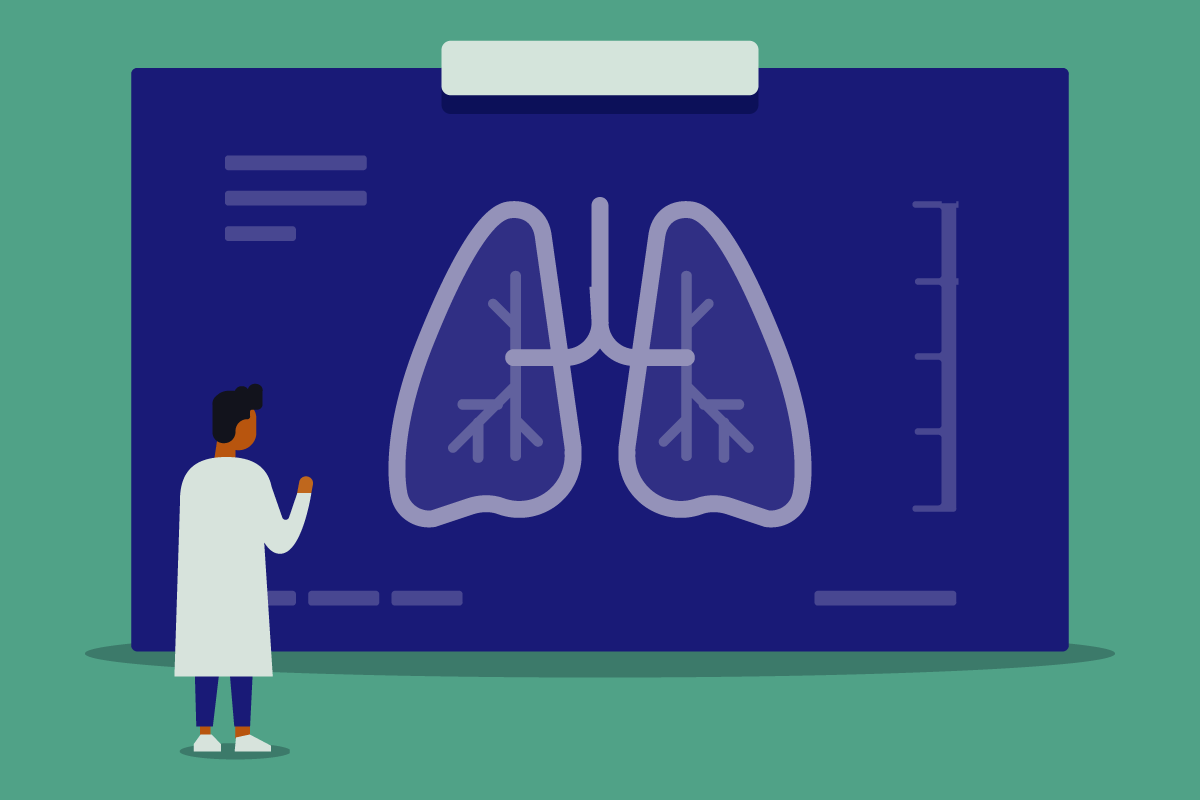People who have chronic obstructive pulmonary disease (COPD) regularly experience shortness of breath. But COPD is much more than that.
“With COPD, your lungs are chronically stiff, and that can cause problems including chest tightness, coughing and shallow breathing,” says Dr. Ian Bushell, a family medicine physician and medical director for BlueCross BlueShield of Tennessee. “Patients may be more familiar with the terms ‘emphysema’ or ‘chronic bronchitis’ than ‘COPD,’ but all are chronic lung diseases that you need to manage proactively to avoid serious complications and lead a healthier life.”
What is COPD?
COPD is a disease that makes it hard for you to breathe.
There 2 main types are:
- Chronic bronchitis, which happens when swelling and mucus narrow your airways to the point that air has trouble getting through
- Emphysema, which happens when lungs are damaged to the point that air gets trapped inside
“Because COPD comes on gradually and worsens over time, many people don’t notice the symptoms until a family member points out that they’re having difficulty doing things that used to be easy,” says Dr. Bushell. “For example, many people with untreated COPD have trouble keeping up with the grandkids, going up stairs, doing housework, walking, bathing or getting dressed.”
What are the symptoms of COPD?
Common symptoms of COPD include:
- A long-lasting cough which may produce mucus
- Shortness of breath, especially during activity
- A feeling of tightness in the chest
- An inability to take a deep breath
What causes COPD?
“Most people who have COPD have been exposed to smoke, dust or particles that irritate and damage the lungs over time,” says Dr. Bushell. “There are also a few who are just genetically predisposed to the condition. But most COPD cases are caused by smoking.”
Causes of COPD include:
- Tobacco smoke (including secondhand smoke)
- Air pollution
- Dust
- Chemical fumes
- Gases, vapors or mists
Screening, treatment and tips
In most cases, COPD is preventable, especially when smoking is the cause. While there is no cure for COPD, treating the symptoms will prevent complications down the road.
“If you have any COPD symptoms, there’s no downside to asking your doctor if you should get screened,” says Dr. Bushell. “Diagnosis and treatment are the only ways to prevent serious complications such as an irregular heartbeat, high blood pressure or respiratory infections.”
COPD screening
Screening for COPD typically involves a few simple, non-invasive tests. Your doctor will listen to your lungs and may take an X-ray. The most common method is a spirometry test, which measures how much air you can blow out of your lungs.
“The screening is really easy,” says Dr. Bushell. “All you do is blow into a cardboard tube, so it’s outpatient, and it doesn’t hurt. Once you get your results, keep track of them. If you have evidence of lung disease, you’ll need to get re-checked later on to see if it’s gotten worse, or if you need to modify your treatment.”
Treatment for COPD
With COPD, the goal is to treat the symptoms and prevent things from getting worse.
Treatments for COPD include:
- Prescribed inhalers to loosen and relax the lungs
- Therapies including an exercise program, breathing strategies, or learning how to limit exertion
- Vaccines (influenza, pneumonia, COVID-19) to prevent dangerous respiratory infections
- Oxygen therapy using a mask and tank
- Antibiotics in acute situations where there’s a likelihood of an infection such as pneumonia
“It’s important to note that even though COPD is a lung disease, it’s treated differently from asthma,” says Dr. Bushell. “Talk with your doctor, and follow their recommendations about what to take and when. And never borrow other people’s medicines, like the inhaler from your friend with asthma. It won’t work for you like it works for them because asthma is a different disease.”
5 tips for managing COPD
1. Quit smoking
“The best way to manage COPD is to avoid things that irritate your lungs,” says Dr. Bushell. “If you smoke, quit or get help quitting.
“Not only does smoking worsen symptoms and increase your risk of complications, but it also means you can’t be on oxygen therapy. Additionally, if you are over 50 years old and are a current smoker or you’ve quit within the past 15 years, be sure to talk to your doctor about screening for lung cancer.”
2. Avoid irritation
If you can, cut down on environmental factors that worsen your condition. These include dust or particles from manufacturing, metal or auto work, ceramics, woodwork, coal, etc.
“Note that we’re talking here about industrial dust, not household dust,” says Dr. Bushell. “It takes years of exposure to a very dusty work environment to cause COPD.”
3. Change your lifestyle
Perform your daily activities slowly until you get your COPD under control. Wear clothes and shoes you can easily put on or take off, and ask for help when you need it.
4. Prepare for emergencies
Ask your doctor what symptoms constitute an emergency for you, and know who to call or where to go to get emergency treatment.
5. Seek emotional support
“COPD is a challenging condition that can cause anxiety, depression and stress on top of its physical symptoms,” says Dr. Bushell. “It helps to talk to someone, whether that’s a counselor, support group, family or friends.”
More about COPD from WellTuned
- 5 breathing exercises for people with COPD
- Travel checklist: Asthma and COPD
- Tips for people who’ve stopped smoking
Get more information about specific health terms, topics and conditions to better manage your health on bcbst.com. BlueCross BlueShield of Tennessee members can access wellness-related discounts on fitness products, gym memberships, healthy eating and more through Blue365®. BCBST members can also find tools and resources to help improve health and well-being by logging into BlueAccess and going to the Managing Your Health tab.





